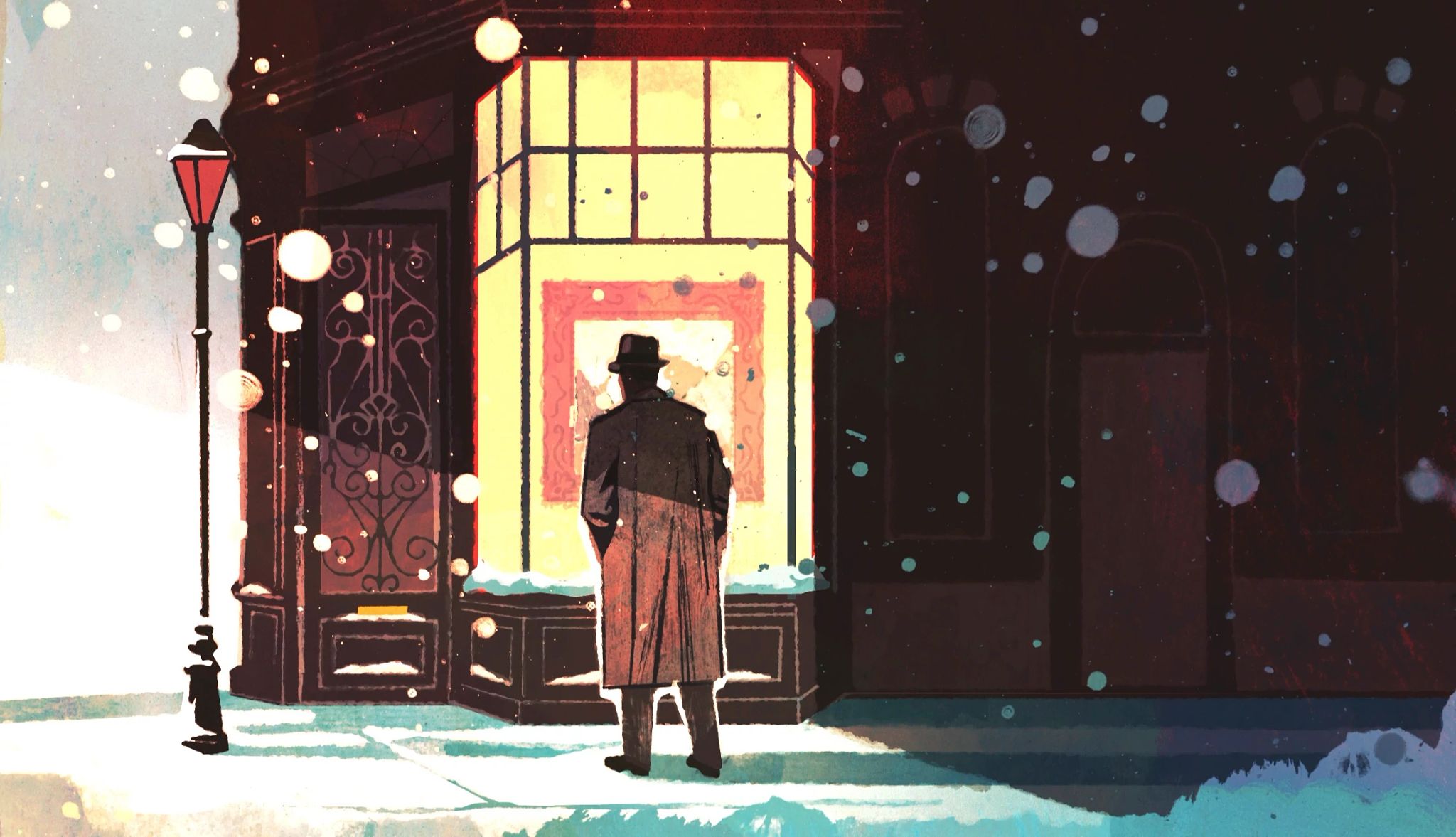AARP Hearing Center


Chapter 5
I WATCH THE SHOPPERS. Today’s shopping could be classified as a sort of athletic event. People barely able to carry their exploding shop- ping bags. Huge flat-screen television sets lugged by happy men. Packs of happy people, angry people, exhausted people.
I have seen the videos of women punching one another to snatch the last green Shetland sweater at H&M. Entire families—mothers, fathers, wailing children—waiting outside Macy’s since four in the morning so they can be the first to race down the aisles.
I take in all the madness as I walk the six blocks down and one avenue over from 63rd Street to 57th Street. I turn right. Yes, Namanworth Gallery will be shut tight, but I am so close that I must visit.
An ornate carved steel door covers the entrance. The one front window holds a single easel that holds a single large impressionist canvas. It is famous. A painting by Monet. The painting is framed with baroque gold-leaf wood. It is one painting in Monet’s series of haystacks.
The subtle beauty of color and craft eludes me. I cannot help myself. I examine it purely as a possible forgery.
I pull up the series of paintings on my phone and quickly find the one I’m looking at. I know I am on a fool’s errand. The tiny phone photo and the gorgeous real painting cannot be compared. Is a straw out of place? Is that smudge of cloud identical to that smudge of cloud?
Wait. What about the artist’s signature?
I recently read that a woman had a Jackson Pollock painting hanging in her entrance hall for twenty years. No one—not the woman, not her guests—ever noticed that the artist’s signature was spelled incorrectly: “Pollack” instead of “Pollock.”
No such luck. A big bold signature: Claude Monet. Not Manet. Not Maret.
“Monet” is “Monet.” How could I expect to be so lucky?
I decide to take a few photographs of the painting. I am not sure why I need photographs, but they might somehow someday come in handy. I move to the left, then right. I try to avoid the glare on the window.
Now I hear a voice from behind me. “You taking a picture for the folks back home?”
Mon Dieu! I have been mistaken for a tourist.
I turn and see a portly middle-aged man. He is wearing an inexpensive gray suit with an inexpensive gray tie. He wears a heavy raincoat and a brown fedora. He is smoking a cigarette.
“Beautiful painting,” the man says.
“It certainly is,” I say, as I slip my phone into my suit jacket.
“I’m one of the security people for Namanworth’s,” the man says. “You’ve been looking at that picture for quite a while.”
There is no threat in his voice, no anger.
“I have a great interest in Monet,” I say. “The Haystacks series in particular.”
“Apparently a lot of people have an interest in this stuff,” the man says. “I work out of that second floor front office. Just me and my binoculars.”
He gestures in the direction of the elegant stationery store across the street. It is the same store where I have my business cards engraved.
“I just thought I’d come ask what’s so intriguing about that painting. It seems to have caught a lot of attention today. Not just the usual shoppers and tourists,” he says.
“Well, who else, then?” I ask as casually as I can.
“Well, there was a man and a woman, a young couple. They were driving a Bentley. Double-parked it. Then they began shoot- ing their iPhones at the painting. Little later two guys in one of those Mercedes SUVs jumped out; these guys had big fancy cameras, real professional-looking. Then I saw you... and anyway, I needed a smoke.”
“And do you have any idea what the others wanted?” I ask.
“Just art lovers, I guess. Anyway, they looked kinda rich. Sorta like you—now that I see you close-up. I guess you’re too fancy to be a tourist.”
A twinge of relief. Then the security man flicks his cigarette onto 57th Street.
“Did you record the license numbers of the cars?” I ask.
“No. They weren’t doing anything that unusual. Could be they were thinking of buying it. I’m just here to make sure no body breaks the window... though it’s as unbreakable as you can get.”
“I’m sure it is,” I say.
“Well, you have a good day,” the man says. He walks to the curb, looks both ways. He turns back toward me and speaks.
“You’re French, right?”
“I am, yes.”
“I thought so.”
I am so obviously French that I might as well have a statue of the Eiffel Tower on my head. But the man is pleased with his detective work. Then he crosses the street.
I take a final look at the Monet.
I am about to make my way to Madison Avenue when, without warning, I think about Dalia. I freeze in place. People walk around me, past me.
Suddenly I am overwhelmed by sadness. It is not depression. It is not physical. It is... well, it is a sort of disease of the heart. It al- ways comes without warning. It is always dreadful, painful.
Fortunately, I know just what to do.




































































You Might Also Like
Read 'Midnight at the Blackbird Café' by Heather Webber Free Online
Dive into this tantalizing tale of magical realism and sweet romance, available to AARP members in its entiretyFree Books Online for Your Reading Pleasure
Gripping mysteries and other novels by popular authors available in their entirety for AARP membersIs Nicholas Sparks as Romantic as His Novels?
‘The Notebook’ author discusses life, love and his new book, ‘Counting Miracles’